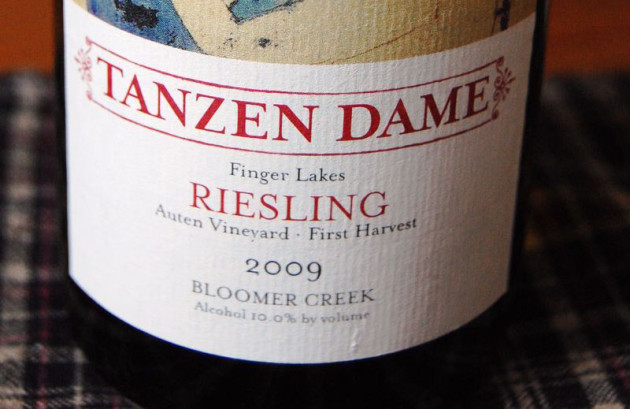“No reserve wines in 2009 due to shittiest vintage ever.”
It was one of the greatest tweets I’ve ever read, because it came from a winery employee. The tweet is long since deleted, but that is close to a word-for-word recollection. How could I forget it? I admired it instantly. Wine and food writers are often sifting through spin, and this was unvarnished.
That was the summer that wasn’t, as my wife calls it. Almost never sniffed 90 degrees, and spent most of July in the low-to-mid 70s. Ripening was slow, and when frost came in October, it was, for most, the end of a challenging vintage.
You won’t be surprised to hear that the managers of the winery from which that tweet originated were displeased. They probably thought the tweet was bad for business. It was, instead, wonderful for business. Vintages come and go. Trust with customers can last a lifetime. People appreciate honesty, even in the hard times. I found myself wanting to go back to that winery, time and again, after that tweet.
But was the tweet accurate?
The short answer is, for Bordeaux varieties, sure. It was so difficult to get the fruit to ripen, and the result was generally thin wines. That’s speaking broadly.
But something else is happening with the 2009 vintage. Outside of Bordeaux varieties, some wineries have produced wines that are not only very good; they’re going to last a long time. I’ve tasted a number of 2009s in recent months, and many of them have barely budged from their initial incarnation.
Below is a short list, and some of these wines might still be available in stores or tasting rooms. The key to the preservation of these wines is the natural acidity. This is a region that almost never lacks for acidity, and this was a crackling vintage. When sugars are slow to rise, acids tend to be slow to drop. That’s not necessarily a problem; the question is whether the wines will have flavor complexity.
For Finger Lakes riesling, 2009 produced a lot of apple and lime. For pinot noir, 2009 produced a lot of strawberry and raspberry. Simple, delicious, not too complex. The best growers and the savviest winemakers turned it into something more, however. September of 2009 was the driest in 40 years, a glorious burst at the right time. Pinot is picked early — before Bordeaux varieties — and so pinot benefited the most from this run.
While I’m not looking for 2009 Finger Lakes cabernet sauvignon, I’m amazed at the quality of the top wines of the vintage. Vineyard managers have learned to navigate the vagaries of the weather.
Anthony Road 2009 Martini Reinhardt Selection Riesling
I was stunned with this wine. It was outstanding on release, and it is even better now, and I’m not sure it will ever die. If only I had a case, or two cases. I can not possibly advise you on what to do with this wine, if you’re fortunate enough to own some. Because right now, it’s one of the most thrilling Finger Lakes rieslings I’ve ever had, but I strongly suspect it will improve, and I’d be fascinated to come back to it in ten years. A combination of richness and energy, and a cascade of flavors. Just marvelous.
Ravines Wine Cellars 2009 Pinot Noir
This is such a pretty wine. Just about every vintage of this wine is a fooler in the glass: rather soft in color, but soaring in aromatics, and long in the mouth. It moves well beyond the basic profile for pinot noir in the Finger Lakes, and I’m happy to have a few more bottles.
Damiani Wine Cellars 2009 Riesling
This was the New York Cork Report 2010 White Wine of the Year, and it is showing why. Lou Damiani and his team made some very smart decisions during harvest, and we’re all benefiting. He left more sugar in this wine than he ever had in a riesling, and the result is a deft balance on a razor’s age of acidity. There are 40 grams of RS here; it still tastes like 20, and the flavors are becoming more interesting with time.
Heart & Hands Wine Company 2009 Reserve Riesling
Tom and Susan Higgins have been known for their passion for pinot, and deservedly so. But their track record with riesling is probably under-appreciated as a result. That should change. Their 2007 Riesling is one of the few Finger Lakes wines from that vintage that has aged without collapsing into petrol (due to the heat stress of the vintage), and it’s no surprise that their 2009 is on an even slower, stronger age curve. This wine fills the mouth, then delivers the thunderbolt.
Bloomer Creek 2009 Auten Vineyard First Harvest Riesling
This is perhaps the most intriguing wine of the entire vintage for this region. Kim Engle is a risk taker, and since its release, this has been a spellbinding wine. It’s almost waxy in texture. The vintage’s acidity undercuts the flavors that seem to change with each taste: lavender, stone fruits, honeycomb, almond paste. But this is the wine that I’d drink sooner rather than later; it’s showing a bit of softness compared to the preceding wines. Still a beauty.

